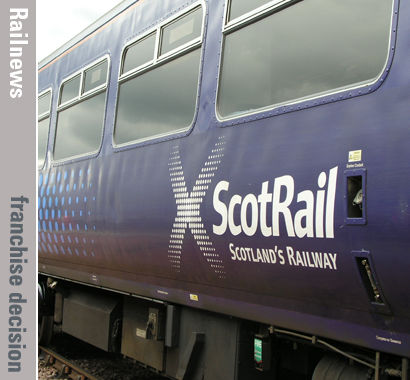Updated 08.25 19 Dec.
THE Scottish Government has decided to terminate the ScotRail franchise held by Abellio when the core contract ends on 31 March 2022. Abellio said it was ‘hugely disappointed’.
There is a break point in 2022, when the levels of subsidy are recalculated or ‘rebased’, and in theory the contract could have been extended up to 2027.
Transport secretary Michael Matheson has been briefing MSPs today in the Scottish Parliament.
He said: ‘Ministers must ensure that the services we secure are high performing, financially sustainable and offer value for money.
‘We currently provide around two thirds of the running costs for our railway and it is essential that this is sustainable.
‘Any changes to the level of subsidy paid by the government must deliver new benefits for passengers and taxpayers and whilst there have been improvements in recent years, the proposed changes were not sufficient to justify additional subsidy.
‘Of course, the Scottish Government must plan for the future of our rail services beyond 2022 and work is already underway to examine the options open to us.
‘Longer term, this Government has already made clear its position that the current franchising regime, which is a matter reserved to the UK government, has failed and it is widely accepted that the rail industry, as a whole, must embrace reform.
‘The best way to deliver this is through the transfer of all rail powers, which would allow us to work together to find the right solution for our railways in future – properly integrated and fully aligned with the public interest and Scottish Government policy.’
ScotRail has been under pressure in recent times over poor performance, and two Remedial Notices were served by Transport Scotland.
Abellio UK managing director Dominic Booth said the company, which is part of the international arm of Dutch Railways, was ‘hugely disappointed’. He added: ‘Our offer to Transport Scotland would have delivered an improved service for our customers at a reduced cost to the taxpayer.’


